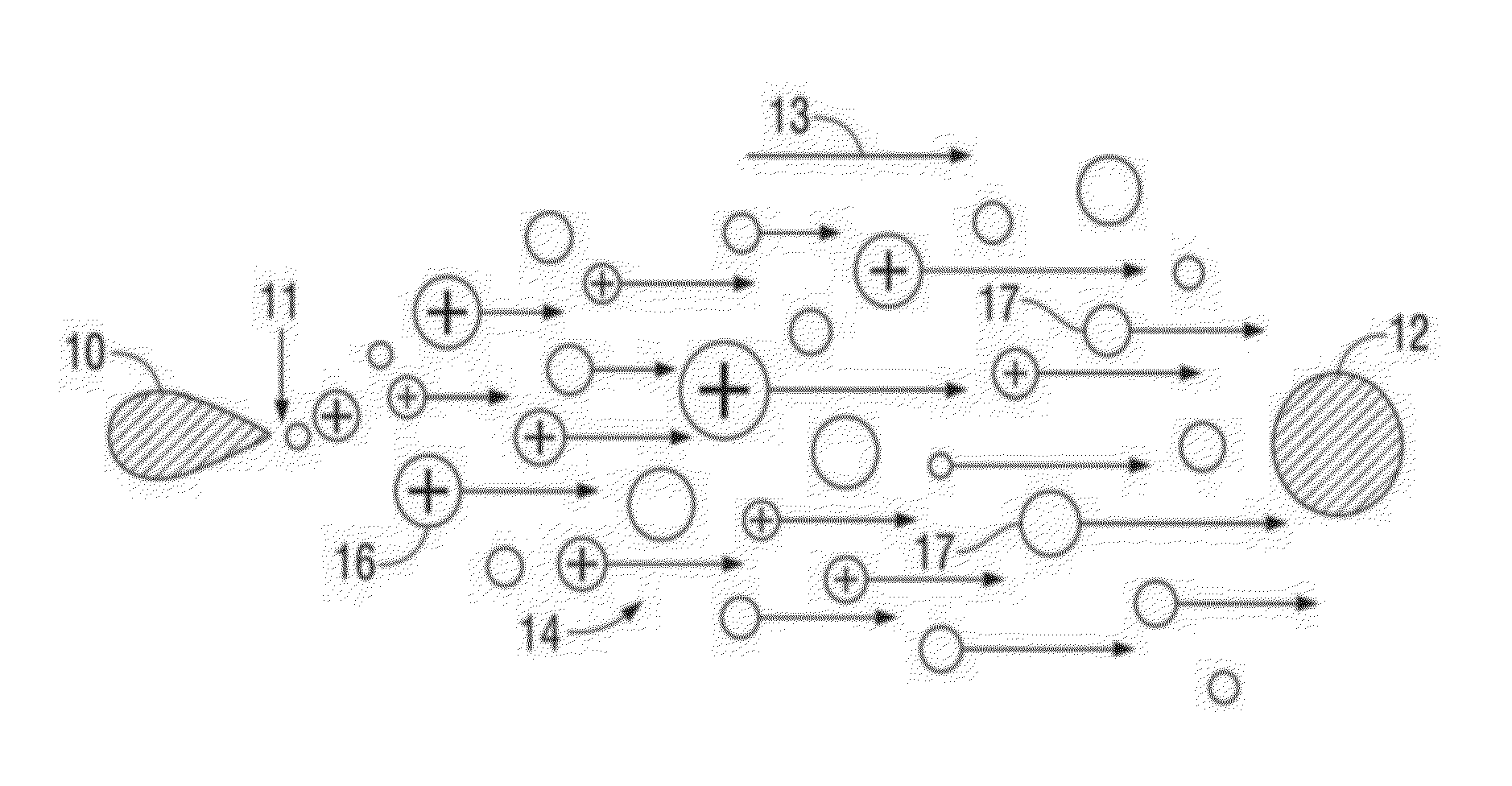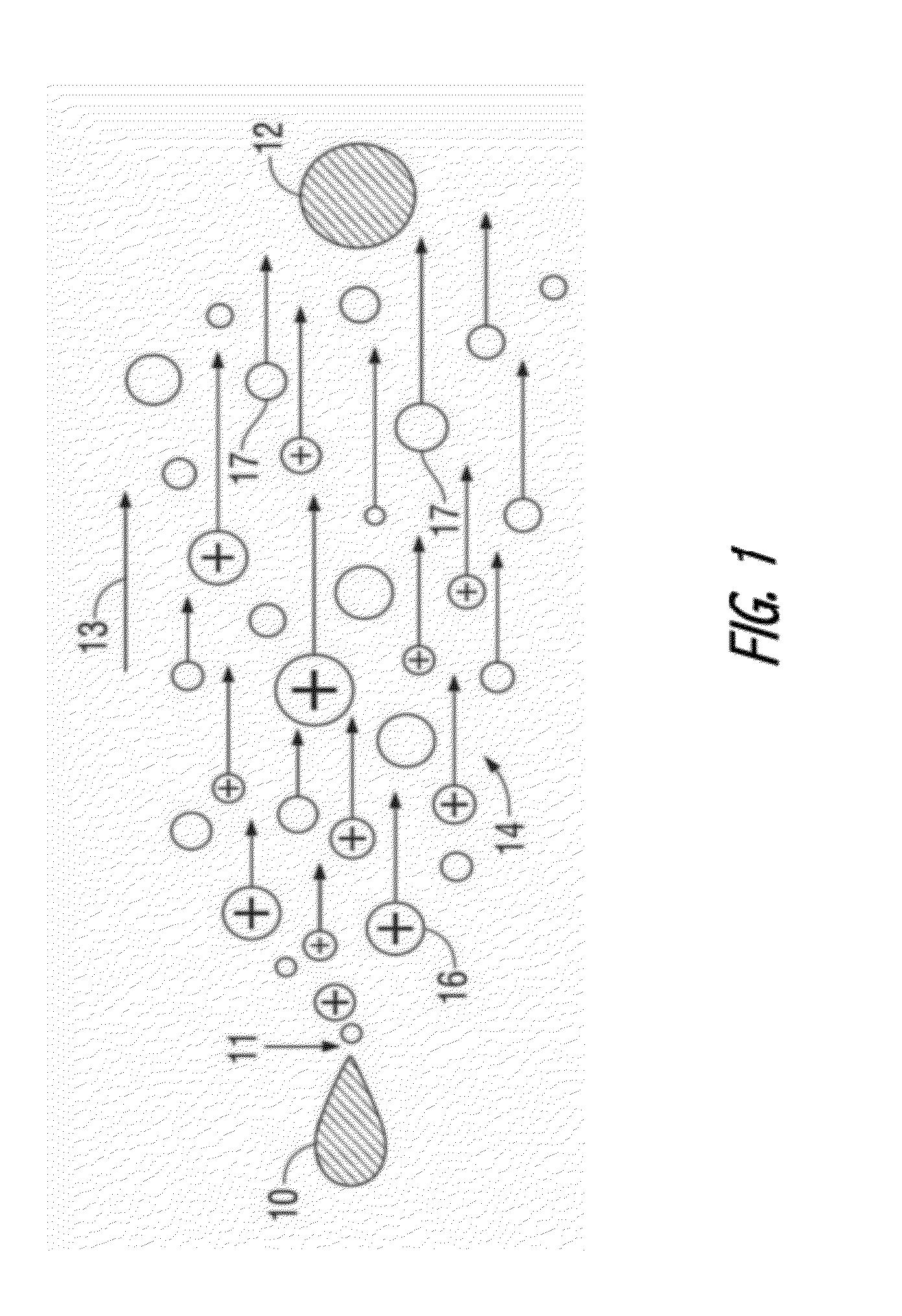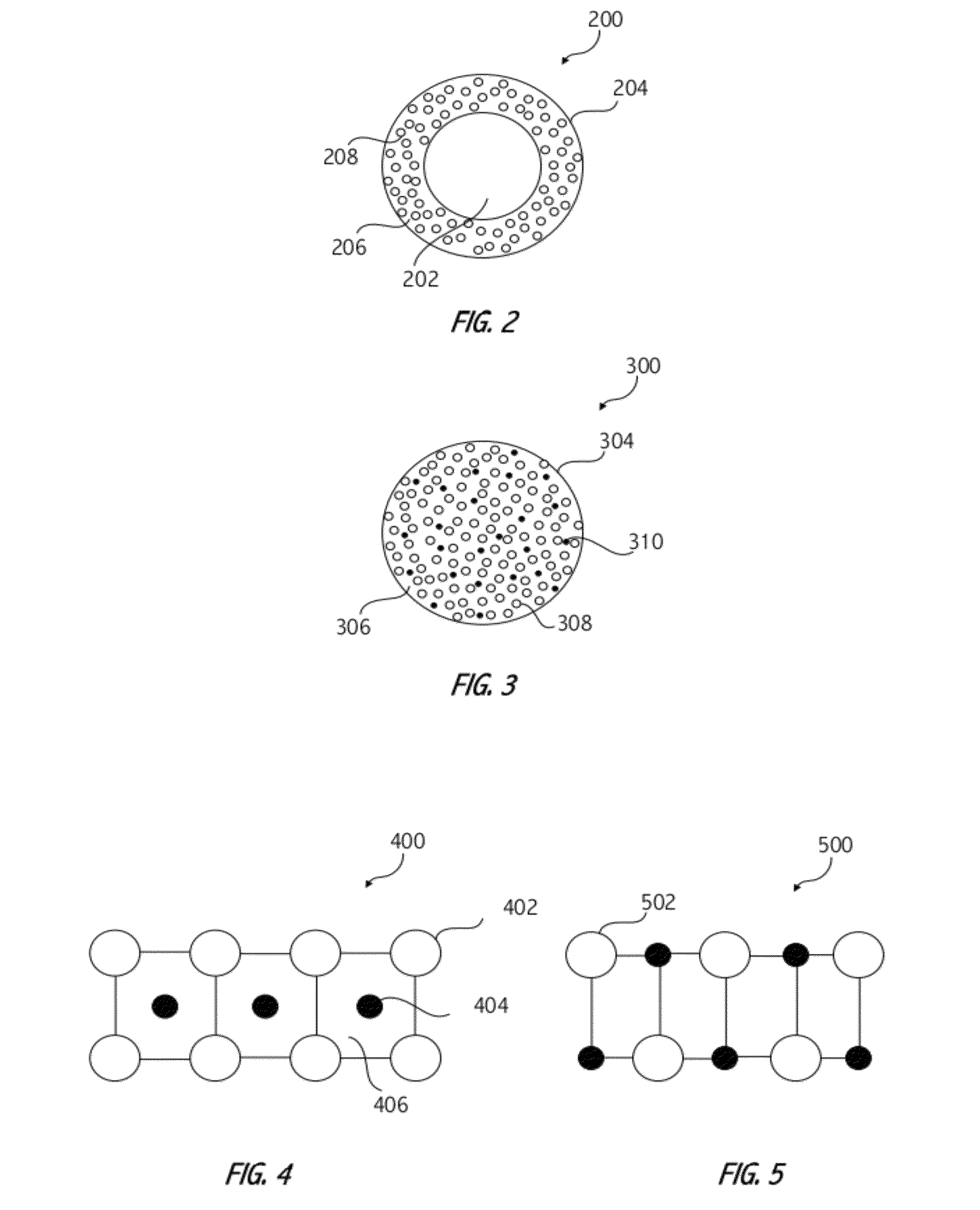Layered Emitter Coating Structure for Crack Resistance with PDAG Coatings
a technology of layered emitter and coating structure, applied in the direction of electrode construction, electrostatic separation details, lighting and heating apparatus, etc., can solve the problems of consuming power or other design problems, consuming power, and generally limited operating lifetime of devices, so as to reduce thermal solution footprint and volume, reduce vibration, and reduce power consumption
- Summary
- Abstract
- Description
- Claims
- Application Information
AI Technical Summary
Benefits of technology
Problems solved by technology
Method used
Image
Examples
Embodiment Construction
[0090]Some implementations of thermal management systems described herein employ EHD devices to motivate flow of a fluid, typically air, based on acceleration of ions generated as a result of corona discharge. Other implementations may employ other ion generation and motivation techniques and will nonetheless be understood in the descriptive context provided herein. For example, in some implementations, techniques such as silent discharge, AC discharge, dielectric barrier discharge (DBD) or the like may be used to generate ions that are in turn accelerated in the presence of electrical fields to motivate fluid flow.
[0091]Typically, when a thermal management system is integrated into an operational environment, heat transfer paths (often implemented as heat pipes or using other technologies) are provided to transfer heat from where it is generated or dissipated to a location(s) within an enclosure where air flow motivated by an EHD device(s) flows over primary heat transfer surfaces....
PUM
 Login to View More
Login to View More Abstract
Description
Claims
Application Information
 Login to View More
Login to View More - R&D
- Intellectual Property
- Life Sciences
- Materials
- Tech Scout
- Unparalleled Data Quality
- Higher Quality Content
- 60% Fewer Hallucinations
Browse by: Latest US Patents, China's latest patents, Technical Efficacy Thesaurus, Application Domain, Technology Topic, Popular Technical Reports.
© 2025 PatSnap. All rights reserved.Legal|Privacy policy|Modern Slavery Act Transparency Statement|Sitemap|About US| Contact US: help@patsnap.com



